With direct skin contact with a heat source above 50 degrees, tissue damage occurs. The reason for this is the skin's low thermal conductivity. If the burn affects not only the epidermis, but also the top layer of the dermis are formed Burn blistersthat are filled with liquid.
What is a burn blister?

© Leo - stock.adobe.com
A burn blister is a second degree burn. It arises between the upper skin (epidermis) and the dermis (corium). The skin over the bladder is tight and stable. It is also filled with tissue fluid, which is also known as a serous transudate. This liquid is used to cool the underlying wound.
It shields the injury from external influences and prevents germs from entering. If a blister bursts, the light red, oozing leather skin appears. Since the receptors are retained in grade II burns, the blisters cause severe pain.
Whether medical treatment is needed depends on the intensity of the pain and the size of the bladder. Unauthorized opening of a blister is to be avoided, as penetrating germs can lead to inflammation. These are in need of treatment.
causes
Burns are one of the most common injuries in everyday life. Accidents can happen quickly, especially if they are carelessly handled household appliances such as irons or stovetops. Typical triggers of burn blisters are contact with heated liquids such as water or oil and direct contact with hot objects.
Another possibility is heat build-up through friction. This is often the case in motorcycle accidents, for example, when the rider slips over the asphalt when falling.
At temperatures of 50 to 60 degrees, protein denatures and the heat destroys the tissue cells. Due to the poor conductivity of the skin, local heat effects cannot spread quickly enough. The heat therefore remains in one place for too long and damages the skin. The body forms burn blisters to protect the injured area and to prevent infection.
Symptoms, ailments & signs
A burn blister is caused by burning the skin, causing a blister to form. Of course, this phenomenon is associated with typical symptoms that are characteristic of a burn blister. This includes, for example, permanent burning that will occur immediately after the burn.
However, immediate cooling of the affected area can help. Under certain circumstances, the burn blister can enlarge considerably within a short time. If the pressure inside is too high, the blister will burst and the liquid will escape. This process is usually associated with a strong burning sensation, as there is now an open wound.
In this context, further complaints can arise if this open wound becomes inflamed. Bacteria can lodge and pus forms. Those who leave this clinical picture without medical and drug treatment run a great risk.
In such a case, a visit to the doctor should not be put off on the back burner. The subsequent healing process of a burn blister can also lead to severe itching]. However, this typical symptom points to complete and rapid regeneration of the skin.
Diagnosis & course
The diagnosis is made on the one hand through a conversation with the patient and on the other hand through an assessment of the burn wound. If, for example, the patient cannot be approached due to an accident, the doctor will recognize a burn blister based on its typical appearance.
While blisters caused by severe sunburn appear colorless, burn blisters are yellowish. The reason for this is the color of the wound fluid. In addition, the filled bladder gives way to pressure, but does not burst. The surrounding skin is reddened. Burn blisters usually heal without leaving scars.
However, pigment disorders may occur in the affected areas. If neither the patient nor the doctor opens the bladder, it will open by itself after a few days. Underneath is a new, intact skin surface that is still sensitive, but usually heals quickly. The healing time is between two and three weeks. This depends on the severity of the burn and the size of the bladder.
Complications
Burn blisters are usually harmless and resolve on their own within a few days. Complications can arise if the burn blister bursts before wound healing is complete. When the burn blister bursts, germs can get onto the sensitive dermis and cause infections and bacterial inflammation.
Due to the already weakened tissue, it can take several weeks after a renewed inflammation until the burn blister has completely healed. Complications can also arise from pressing on the burn blister, as this delays the healing process and increases the risk of pathogens getting under the skin. Burn blisters at the typical stress points can lead to tension and incorrect stress on the muscles, which in turn causes pain and overload.
Larger burn blisters carry the risk of permanent skin changes, and viral or bacterial skin infections can develop quickly. There can also be complications associated with treating burn blisters. Home remedies such as ointments or fats can lead to an infection, while plasters slow down natural wound healing.
If sterile tools are not used to pierce the burn blister, scars can also form. To avoid complications of this kind, burn blisters should always be opened by the family doctor and treated with regard to the cause.
When should you go to the doctor?
With a small burn blister, there should be no complications. However, this can change if the unprotected blister opens. Something similar threatens if the person concerned opens the blister himself and bacteria or dirt get into it. In this case, the wound may become inflamed. A tetanus is also possible. A tetanus injection should be considered with a dirty burn wound. It is best if the person concerned leaves the burn blister unopened until it has dried up.
Complications are more likely with large burn blisters. The deeper the skin layers under the burn blister are damaged, the more problematic it can become. It is also important where the burn blister has formed. Friction or pressure on the burn blister increases the chances of complications. If a burn blister covers a large area, a doctor should always be consulted.
Burned skin is predestined for inflammation. A doctor makes the assessment of whether a large burn blister needs to be opened or treated to avoid complications. He can tell whether or not a scar will form. That being said, doctors can gauge how deep the burn goes. On the one hand, the shock of extensive burns and, on the other hand, a loss of fluid can lead to complications. In addition, if there is a lack of sterility, there is a risk of sepsis.
Doctors & therapists in your area
Treatment & Therapy
There are various first aid measures for burn blisters that need to be observed. The affected area must first be exposed. Clothing fabric stores heat and worsens symptoms. Since bubbles often take several hours to form, cooling can prevent them from forming. Running water with temperatures of 15 to 20 degrees is ideal for this. This also applies if a bubble has formed directly.
Avoid cooling with ice, as the temperature difference further damages the skin. The same applies to rubbing in with home remedies such as flour or fats, as they make further medical treatment more difficult. When the bladder is opened, the protection against germs is lost, which can lead to inflammation. Only the intact burn blister can prevent bacteria from entering.
If a doctor's visit is necessary, he will resort to various treatment options. Puncturing the blister is possible. The doctor draws fluid from the bladder to relieve tension. The skin over the injury is preserved, and germs can get into the wound with this method. The most common option is to prescribe a pain reliever and a cooling ointment.
In this case, the doctor simply applies a hydroactive wound dressing and waits for the burn blister to dry out naturally. With this method, it is important to change the bandage or plaster regularly to support the wound healing. If the bladder is already open, the wound must first be rinsed and cleaned.
Outlook & forecast
The outlook and prognosis for a burn blister can vary greatly, as various complications can arise in connection with a burn blister.
Normally, an existing burn blister should recede and heal completely within a few days. The prerequisite for this, of course, is strict cleanliness and hygiene, which must be given. However, there can also be some complications in this context.
It is not uncommon for such a burn blister to fill up with pus or blood, so that a doctor should be consulted as soon as possible. If a burn blister filled with pus or blood is not treated by a doctor, the bacteria and viruses in it can get into the human bloodstream. This can lead to a dangerous infection or blood poisoning, with an acute risk of death.
Side effects of this infection and blood poisoning can be a general malaise, a high temperature, vomiting or even long-lasting nausea, which have a negative effect on the entire course of a burn blister.
In order to avoid these side effects and complications, medical and drug treatment should be carried out. This can have a positive influence on the prospect and prognosis of a quick healing.
prevention
In order to prevent burn blisters, careful handling of household appliances is essential. Should there be burns, the person affected should cool the areas immediately. Cold water relieves the pain and may prevent a burn blister from forming.
= Aftercare
A small burn blister does not usually require any special aftercare. However, larger burn blisters and those that have injured deeper layers of the skin may require follow-up care. The consequences of a burn blister depend on the extent and depth of the burn. The location of the burn blister may also require follow-up care.
In many cases, the person affected can take care of the blister himself. Superficial burn blisters usually heal after a while without consequences. The healing process can be accelerated with aloe vera gel. Larger burn blisters can ignite after opening. They can water and fester. The regrowing skin can be stretched or sensitive to UV radiation for a long time. Therefore, depending on the symptoms, aftercare consists in protecting the healing wound or in a correspondingly frequent supply of sunscreen.
If deeper skin layers have also been damaged, follow-up care should be left to a doctor. Weeping and bleeding burn blisters that do not close usually require expert care. Follow-up care may include covering the burn blister if it is exposed to chafing from clothing. Surgical interventions or skin grafts may be necessary in the case of very deep and improperly treated burn blisters.
Medical follow-up care is indicated in the case of an acid-related, extensive or deep burn blister. Self-treatment can be contraindicated here.
You can do that yourself
A burn blister does not necessarily have to be treated by a doctor.Various self-help tips and home remedies reduce symptoms and speed up the healing process.
First of all: cool the affected area under running water and supply it with fresh air. If dirt has got into the wound, the burn blister must be disinfected with a suitable tool and bandaged with a burn bandage. If an emergency kit is not available, vinegar or distilled alcohol can be used for disinfection.
Closed blisters can be supplied with quark or yoghurt as an alternative. For the next few days, the burn blister can be treated with aloe vera to reduce the scarring. Potato juice or honey can also help with minor burns. A home remedy for the pain are cold tea bags that are placed on the skin like a compress. Anti-inflammatory teas such as black or chamomile tea are ideal.
Open blisters should not be treated with household remedies, ointments or powder, as this can lead to inflammation and the like. can lead. If the burn blister does not heal within a few days despite the above measures or if it causes severe pain, a doctor is recommended. If you have larger burn blisters, you should go straight to your doctor.

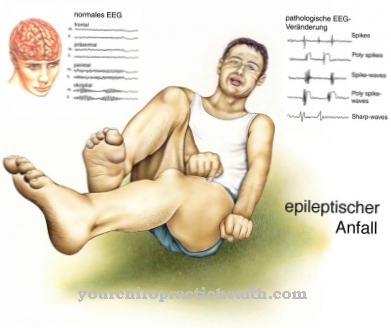
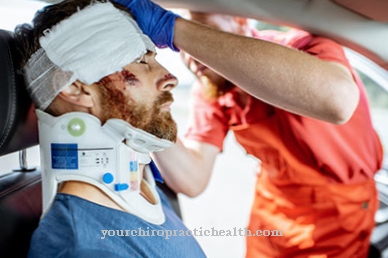
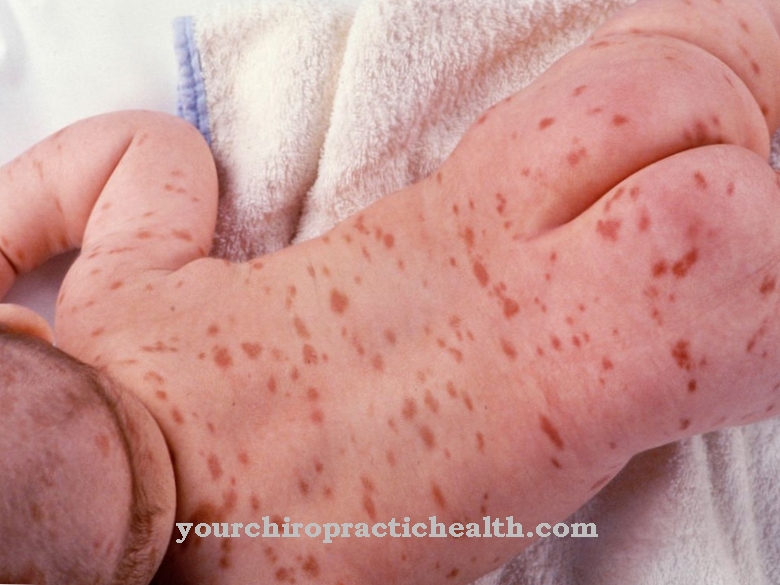
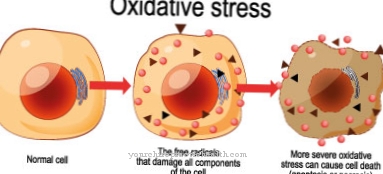
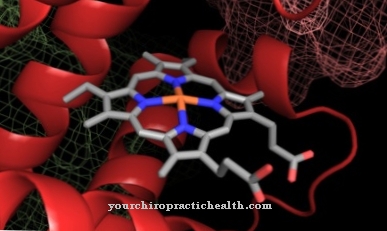
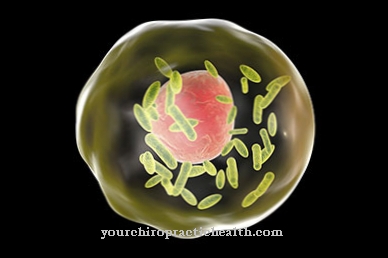





















.jpg)